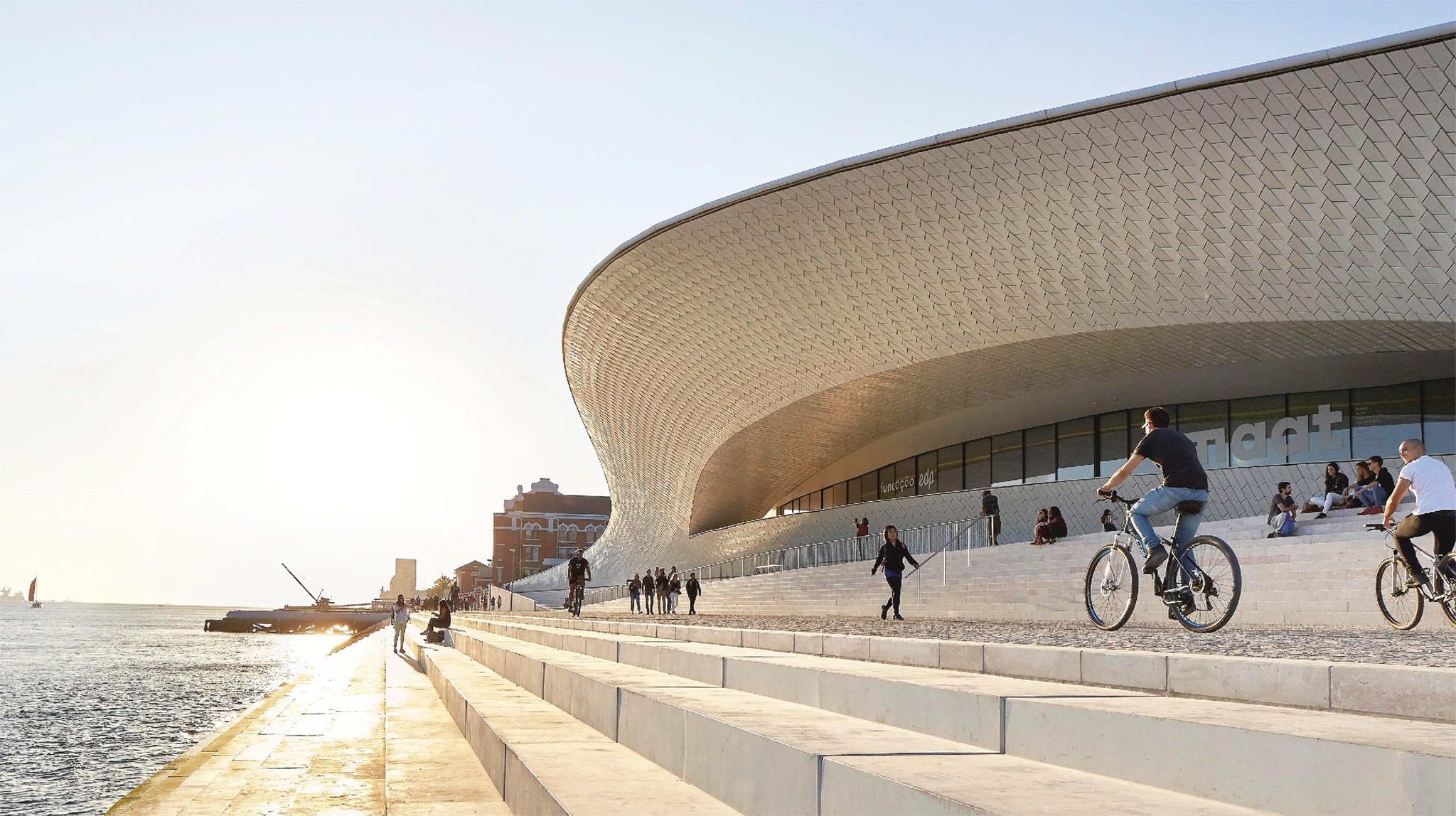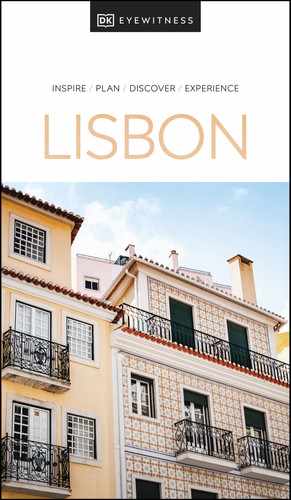LISBON’s
ARCHITECTURE
Shaped by its rich history, Portugal’s capital hosts a variety of adventurous architecture. Design enthusiasts will find plenty to feast their eyes on – from the Arabic influence of the Moors and the distinctive Manueline style to dramatic New State buildings and striking contemporary structures.

t The curvaceous MAAT, designed by Am anda Levete Architects
Contemporary Architecture
Modern Lisbon boasts buildings by some of the world’s leading contemporary architects. In the Parque das Nações, you’ll find Peter Chermayeff’s striking modernist oceanarium and Santiago Calatrava’s cavernous Oriente station. Cascais offers the terracotta towers of the Casa das Histórias, designed by Eduardo Souto de Moura. Lisbon’s latest stand-out structure is the sleek MAAT, a museum showcasing the best in architecture and design.
Twentieth-Century and New State Structures
In the 1930s, Portugal’s dictator António Salazar promoted a public works programme; many of the buildings erected in line with this were Modernist concrete structures with nationalistic touches, designed to double as symbols of propaganda. Examples today include the Monument to the Discoveries in Belém, an austere monument embellished with sculptures of famous people from history, and the towering Cristo Rei, a vast statue of Christ facing the Tagus.
Manueline Designs
This style emerged during the reign of Manuel I (1495–1521), and is also known as Portuguese late Gothic. It heavily features maritime motifs, inspired by Portugal’s Age of Discovery. Key examples are the exquisitely patterned Mosteiro dos Jerónimos, and the iconic Torre de Belém.
Moorish Lisbon
Ruled by the Moors from the 8th to the 12th century, Lisbon still bears traces of their distinctive architectural style. Defensive walls endure, and even the winding, step-strewn streets are a Moorish legacy, the layout devised to disrupt assaults from the river. Nearby Sintra is home to the spectacular Castelos dos Mouros and the Moorish-inspired Palácio de Monserrate.
Álvaro Siza Vieira
Born in 1933, Álvaro Siza Vieira is Portugal’s most famous architect. He won the prestigious Pritzker Prize in 1992 for his renovation of Lisbon’s Chiado district, after it was largely destroyed by a fire in 1988. Known for his Modernist clean lines and simplicity, he also worked on the Portuguese National Pavilion – renowned for its enormous sagging concrete canopy – built for Expo 98.
Did You Know?
Visitors can walk across the curving roof of MAAT to enjoy stunning views of the Tagus.
DISCOVER Lisbon Your Way

GEMS of Architecture
Santa Engrácia
This soaring dome is the national pantheon.
Aqueduto das Águas Livres
A 58-km aqueduct dating from 1748.
Igreja do Carmo
The Gothic ruins of a Carmelite church.
Basílica da Estrela
A Baroque and Neo-Classical convent.
Casa do Alentejo
A palace known for its Neo-Moorish decor.
